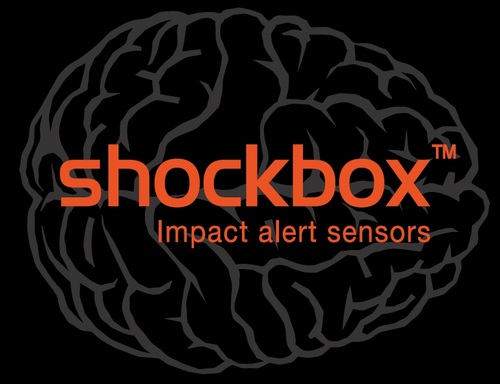Will This High-Tech Sensor Keep Athletes Safe From Concussions?
by Holly Eagleson
Shockbox helmet sensors are bringing football-safety technology to high schoolers around the country.
AS PRESEASON games get under way on gridirons across the country, there’s been unusually positive news about concussions in football. This week the NCAA announced a tentative $30 million settlement for current and former players who suffered concussions after a class action suit was brought against the organization. California also became the 20th state to limit tackling among middle and high school players. The state’s new law will also require medical approval before players can return to the field after a head injury.
Yet, no matter the restitution or restrictions levied to help young athletes, one thing hasn’t changed since last fall—or any season for that matter. We still don’t have a solid way to mechanically prevent sports-related concussions. Some helmet brands are more effective than others at absorbing impacts, but none will prevent a concussion. One recent five-year study of more than 1,800 college football players found that better design may reduce some incidents of concussion. But another study in the Journal of Neurosurgery found that modern helmets protect against head injury only about as well as leather helmets used nearly 100 years ago.
Rather than improve on the status quo, one company is addressing the issue of youth concussions with an information-based approach. Canada-based Impakt Protective makes Shockbox® helmet sensors, the first-ever consumer device that, according to its manufacturer, can detect hits that are forceful enough to result in a concussion.* The product fits in any youth or adult helmet for football, hockey, and other impact sports, and it automatically transmits g-force data in real time to any smartphone within 100 yards via Bluetooth.
Shockbox is the brainchild of Danny Crossman, a veteran of the Army and the defense business who helped develop combat helmet sensors and bomb disposal suits (think “The Hurt Locker”). Wanting to apply that same technology to warriors on the gridiron, he introduced the idea in 2010 to Scott Clark, a software operations executive and a youth hockey coach. Days later, Clark’s son suffered a concussion during a game. Without evidence he’d sustained an injury, Clark’s child was sent back on the ice unaware that it could have caused serious harm. “We realized then that parents have no access to hard data to help them make more informed decisions about their kids’ health,” said Crossman.
Impakt is one of a half-dozen businesses recently selected by Progressive as part of the company’s Apron Projects. The initiative highlights innovators and progress makers who find creative solutions to complex challenges. Like its fellow Apron Project honorees, Impakt seeks to help consumers gain a competitive edge on an everyday problem with smart, practical tools. “We’re a small company that distinguished ourselves by a science-based approach to impact detection, so we’re blown away by this recognition by Progressive,” says Crossman.
Shockbox may sound like a coach’s nightmare, but surprisingly few parents use it to yank their kids from the field. Instead, Crossman says it functions more like a kitchen smoke alarm. “When it goes off, you don’t run and call the fire department,” he says. “You go check and see whether you’ve burned the bacon. Nine times out of 10 there is no concussion, but you have the ability to catch the one that might be.”
Sensor technology may also help clear some of the fogginess around what a concussion looks like. Many coaches and parents incorrectly assume that concussions involve loss of consciousness. It doesn’t help that some of the more subtle symptoms look a lot like everyday athlete behaviors. A postgame headache could be simple dehydration; irritability may be due simply to defeat by a rival.
“Because Shockbox tracks the magnitude, location, and frequency of hits over time, parents or athletic trainers can examine whether unusual behaviors correspond with tackles. We get a lot of comments from moms that they made it through football season because of Shockbox,” says Crossman. “They know they can’t stop athletes from getting a concussion but it gives them peace of mind to know whether they need to do something after the hits.”
Crossman hopes that the technology will help elevate concussions to the status of more tangible injuries, such as knee and shoulder tears. “A brain injury is just like any other, one that needs rest and recovery,” he says. “It’s really about getting rid of the old-school mentality that you get a ding and shake it off and get back in.” With early adopters ranging from grade schools to the NFL using starter sets of seven to 15 sensors, Crossman says trainers are beginning to use Shockbox with entire teams and that, collectively, the data can be used to develop plays that may reduce overall frequency and magnitude of hits.

